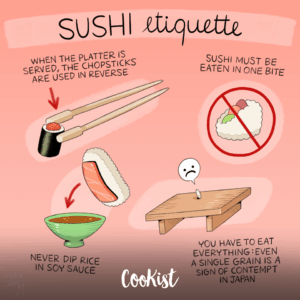Creating perfect jams, jellies, and marmalades hinges on understanding pectin, a complex carbohydrate responsible for the desirable gel formation. As the culinary experts at “The Jam Kitchen Blog” often emphasize, success with pectin relies on a precise understanding and execution of several key factors. This guide delves into the intricacies of pectin-based recipes, providing a detailed roadmap to consistently achieve the desired texture and quality.
Understanding Pectin: The Foundation of Gel Formation
Pectin is a naturally occurring polysaccharide found in the cell walls of many fruits, especially citrus fruits and apples. Its ability to form gels depends on several factors, including its type (high-methoxyl or low-methoxyl), the level of soluble solids (sugar), acidity (pH), and the presence of calcium ions (for low-methoxyl pectins).
- High-Methoxyl Pectin (HMP): This type of pectin requires high sugar (65-70%) and low pH (3.0-3.5) to form a gel. It’s commonly used in traditional jam-making.
- Low-Methoxyl Pectin (LMP): LMP gels require calcium ions and typically less sugar, allowing for lower-sugar jams and jellies. It’s more versatile and often used in commercial applications and recipes calling for reduced sugar content.
Factors Affecting Pectin Gelation: A Detailed Breakdown
- Fruit Selection and Preparation:
- Pectin Content: Different fruits contain varying amounts of pectin. Fruits high in pectin (apples, citrus peels) may require less added pectin, while low-pectin fruits (berries) necessitate supplementation.
- Ripeness: Overripe fruits often contain less pectin and may result in weaker gels. Using a combination of ripe and slightly underripe fruits often provides the best results.
- Preparation: Proper preparation, including washing, crushing, and removing seeds or pips, ensures even cooking and gel formation.
- Sugar Concentration:
- High-Methoxyl Pectin (HMP): Requires a high sugar concentration (65-70%) to achieve gelation. Sugar provides the necessary osmotic pressure for gel formation and prevents microbial growth.
- Low-Methoxyl Pectin (LMP): Can form gels with less sugar, making it ideal for lower-sugar recipes. However, the specific sugar requirement will depend on the recipe and the type of LMP used.
- Sugar Type: While granulated sugar is most commonly used, other sugars can be substituted, although this may affect the final gel’s texture and sweetness.
- Acidity (pH):
- High-Methoxyl Pectin (HMP): Requires a sufficiently acidic environment (pH 3.0-3.5) for gel formation. Acid helps to activate the pectin molecules and promote gelation.
- pH Adjustment: If the fruit is not sufficiently acidic, lemon juice or citric acid can be added to adjust the pH. Using a pH meter for accurate measurement is recommended for consistent results.
- Pectin Type and Quantity:
- Choosing the Right Pectin: Selecting the appropriate type of pectin (HMP or LMP) is crucial for the intended gel strength and sugar content. The package instructions should be followed carefully.
- Pectin Amount: Using the correct amount of pectin is vital. Too little pectin results in a weak gel, while too much can lead to a rubbery or overly firm texture.
- Cooking Process:
- Heating: Proper heating is necessary to activate the pectin and facilitate gel formation. The recipe should specify the exact temperature and duration of heating.
- Stirring: Consistent stirring during cooking prevents scorching and ensures even distribution of heat and pectin.
- Cooling: Allowing the jam or jelly to cool undisturbed allows the pectin to fully set and form a stable gel.
- Calcium Ions (for LMP):
- Calcium’s Role: Calcium ions are essential for the gelation of low-methoxyl pectins. They cross-link the pectin molecules, creating a three-dimensional network.
- Calcium Sources: Calcium can be added to the recipe in the form of calcium chloride or by using calcium-rich fruits or juices.
- Water Activity (aw):
- Maintaining Water Activity: Water activity (aw) refers to the amount of unbound water available in the product. A lower aw value is crucial for preventing microbial spoilage and achieving a firm gel.
- Proper Sugar and Pectin Levels: The right balance of sugar and pectin helps to reduce the water activity and increase the shelf life of the product.
Troubleshooting Common Pectin Recipe Problems
Even with careful planning, some challenges can arise. Understanding these common issues and their solutions is crucial for consistent success.
- Weak Gel: This can result from insufficient pectin, insufficient sugar, insufficient acidity, or overripe fruit. Adding more pectin, sugar, or acid, or using less overripe fruit might help.
- Syrupy Jam: This typically occurs due to insufficient pectin or insufficient sugar. Increasing pectin or sugar will usually resolve this issue.
- Tough or Rubbery Gel: Too much pectin or overly long cooking times are often to blame. Using less pectin and reducing the cooking time might improve the texture.
- Crystalline Sugar: This can result from insufficient sugar or slow cooling. Ensure the correct amount of sugar is used and cool the jam quickly to reduce crystallization.
- Mold Growth: Inadequate sugar content or improper canning techniques can lead to mold growth. Ensure sufficient sugar and use appropriate canning methods to preserve the jam or jelly.
- Separation: This is often caused by inadequate stirring or incorrect ratio of ingredients. Stirring constantly and using the proper recipe is crucial to avoid separation.
Recipe Adaptation and Experimentation: Beyond the Basics
Once the fundamental principles of pectin gelation are understood, you can begin to explore variations and adaptations. Experimentation is key to developing your own signature recipes, but always start with a reliable base recipe before making significant changes.
- Ingredient Substitution: While sugar is crucial, explore the use of alternative sweeteners (with awareness of potential impact on gel formation).
- Flavor Combinations: Explore diverse fruit combinations and spice additions to create unique flavor profiles.
- Texture Modifications: By adjusting the pectin quantity, cooking time, and sugar level, you can fine-tune the final texture (e.g., from smooth to chunky).
- Low-Sugar Recipes: Master the use of low-methoxyl pectin to create delicious jams and jellies with reduced sugar content.
Maintaining Quality and Shelf Life
Proper preservation techniques are vital to maintain the quality and extend the shelf life of your pectin-based creations. This typically involves proper canning or freezing procedures.
- Canning: Follow established canning procedures (water bath or pressure canning, depending on the recipe and ingredients) to eliminate harmful bacteria and ensure safe storage.
- Freezing: Freezing is an excellent method for preserving smaller quantities of jams and jellies, but it’s crucial to use freezer-safe containers and properly label them with the date.
- Storage: Properly canned or frozen jams and jellies should be stored in a cool, dark, and dry place to maintain their quality.


